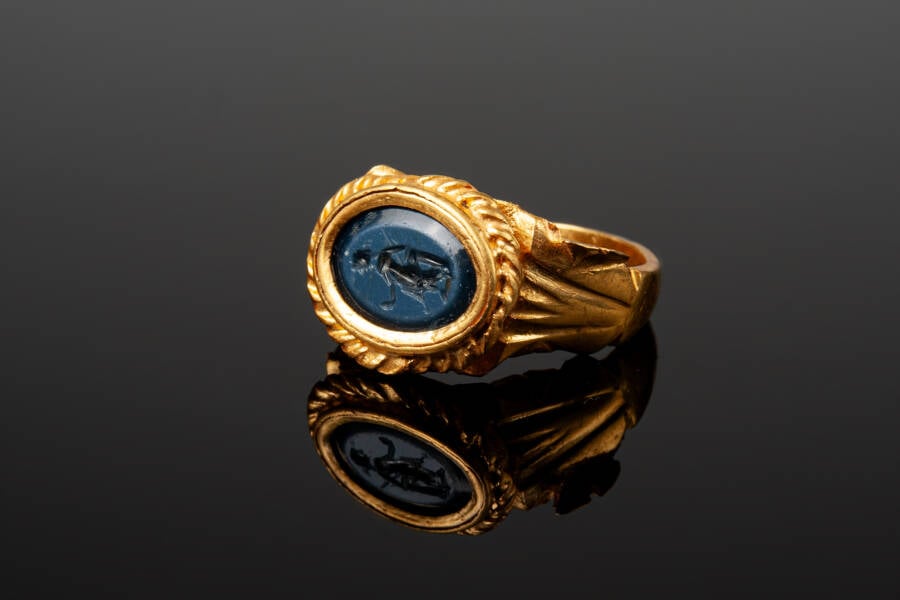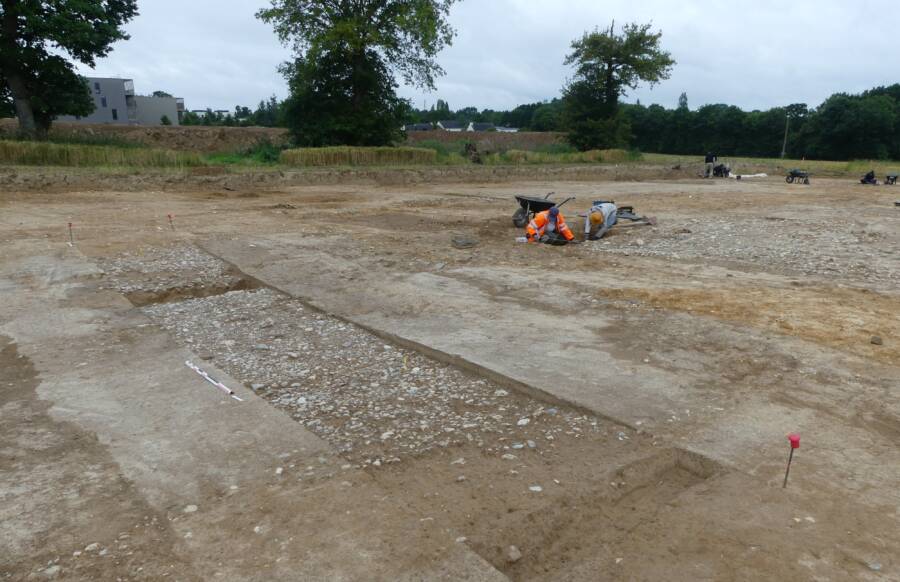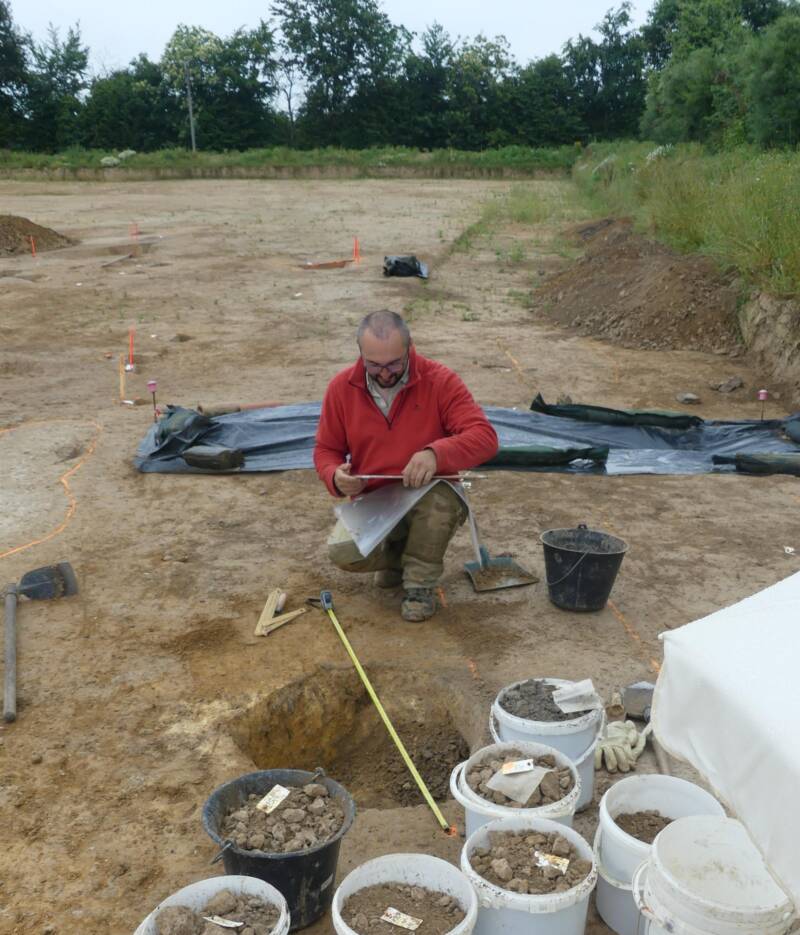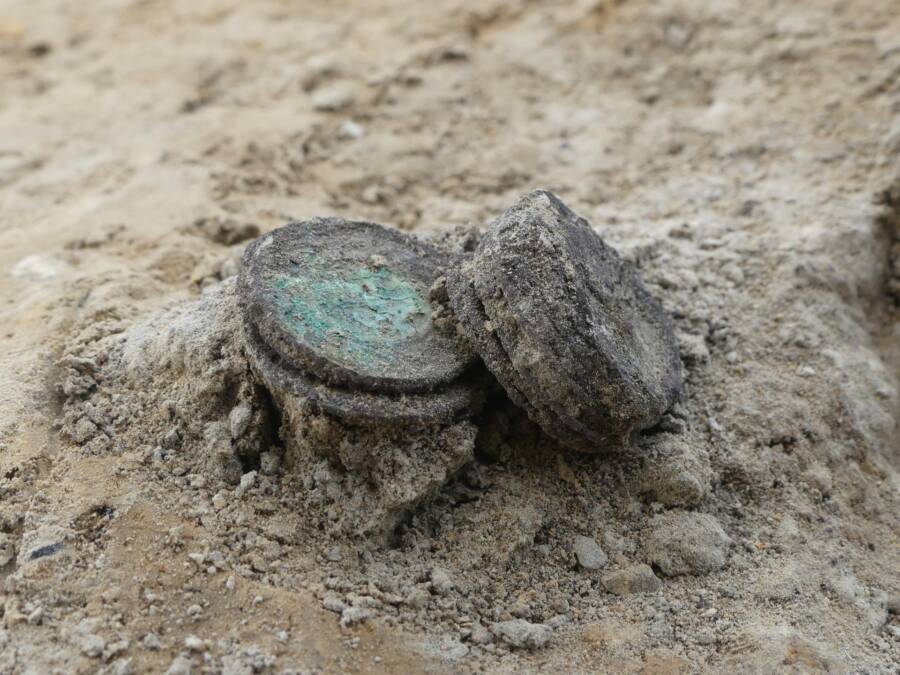Found in an "exceptional state of preservation," the ring was probably dropped by a traveler who was making their way along Roman roads in present-day Brittany, France.

Emmanuelle Collado/INRAPDespite its age, the gold ring depicting Venus that was found in northern France is remarkably well-preserved.
While excavating a site ahead of planned development in Brittany, France, archaeologists made several exciting discoveries. They unearthed evidence of ancient roads, a hamlet, and molds used to make metal objects like swords. But perhaps the most eye-catching find was an 1,800-year-old Roman ring.
Made of gold and onyx, and uncovered in spectacular condition, the ring bears an engraving of “Venus the Victorious” — and tells a fascinating story about Brittany’s Roman history.
The Discovery Of The Roman-Era “Venus The Victorious” Ring In Brittany
According to a translated statement from the National Institute For Preventive Archaeological Research (INRAP), the ring was discovered during excavation work in the French commune of Pacé in preparation for an upcoming construction project. It was detected alongside an ancient road at the site, which was once used between the second and fourth centuries C.E., during the Roman era.

Emmanuelle Ah Thon/INRAPThe ring was found along an ancient Roman road, suggesting that someone once dropped it by mistake.
The ring, found in an “exceptional state of preservation,” was dated to between the second and third centuries. As INRAP reports, it is “composed of a chiseled gold setting and an intaglio in nicolo, a fine stone used for ancient gems, which is said to represent Venus Victrix (who brings victory).”
As such, the ring represents a clear connection to Brittany’s ancient Roman past. The region was conquered by the Romans starting in 56 C.E., who then built a network of roads. The gold ring was found along one of these roads, and Venus Victrix (Venus Victorious) is a Roman goddess associated with both romantic conquests and imperial power.
But it’s unknown how the ring was lost. While it seems likely that a traveler accidentally dropped the ring while traveling along the road 1,800 years ago, it’s impossible to know how the ring was lost, or who it once belonged to.
That said, archaeologists learned a great deal about the various settlements that existed over the centuries at the excavation site in Pacé.
Other Archaeological Finds At Pacé, From A Medieval Settlement To A Cache Of Coins

Yannick Pugin/INRAPAn archaeologist taking samples during the excavations at Pacé.
According to INRAP, archaeologists found evidence of human settlement at the site in Pacé that dates back to the late Bronze Age. Most of the remains, however, come from a settlement dating to the medieval period.
This settlement developed between the fifth and tenth centuries, and “seems to have reached its full development between the seventh and eighth centuries,” according to INRAP. Alongside several “plots” at the site, archaeologists found evidence of “housing…crops, pastures, or specialized activities” and they also uncovered “tableware, cooking pots, storage vases and liquid vases” as well as tiles, bricks, and millstones.
However, one of the most intriguing finds was a set of coins.

Coline Herbert/INRAPAlongside the ring, another exciting find at the site was a cache of Carolingian denarii coins.
The dozen coins found at the site are Carolingian denarii from between the ninth and tenth centuries (when the Carolingian Empire ruled the region) but it’s unknown why they were buried. Curiously, their burial dovetails with a time of increasing Viking raids on the region — and with the abandonment of the settlement. However, it’s presently unknown if a Viking raid is directly connected to the burial of the coins or not.
As such, many questions still remain about the site at Pacé. But between the golden ring and the buried cache of coins, it seems that this tiny slice of Brittany may have once played host to a dramatic chapter in history.
After reading about the 1,800-year-old gold ring found in Brittany, France, go inside the complicated reasons behind the fall of Rome. Then, discover the stories behind some of the worst Roman emperors.





